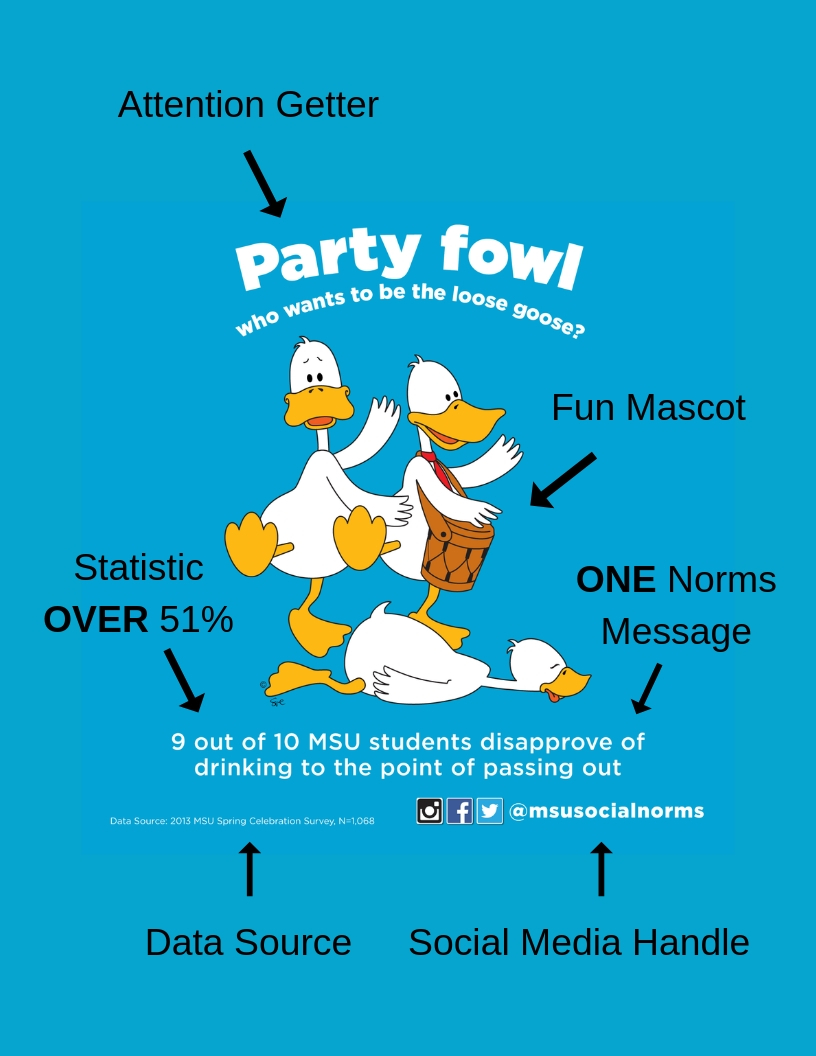Who does well in groups where unhealthy behaviors are the norm?
One frequent concern about the social norms approach is, “what if the majority of a population engages in the unhealthy behavior?” In social norms marketing, we believe that there’s always a positive norm that can be highlighted: for example, even if the majority of a subgroup of college students binge drinks (descriptive norm), the majority of that same group may disapprove of others getting drunk to the point of passing out, getting sick, or other negative behaviors (injunctive norms). Social norms marketing can still focus on the attitudes held by a majority, even if their behavior is contradictory.
Positive Deviance is another approach to highlight healthy behaviors among a minority of a population. This approach has been used more often for nutrition and weight control studies, but a new study (Tucker & Harris, 2015) highlights its use for understanding college students who limit or avoid alcohol despite a norm of binge drinking.
The positive deviance framework basically uses a sequence of quantitative, then qualitative inquiry to examine who are positive deviants in a population, and why they have healthier outcomes than their peers. A basic approach to studying positive deviance (Marsh et al., 2004):
1. Define what the health behavior or outcome is you’re interested in (i.e., complete abstinence from alcohol? Limited drinking that falls below the binge-drinking level?)
2. Quantitative data on the population: analyze data to identify positive outliers, i.e., people whose health behaviors are are significantly better than the mean or median.
3. From these individuals who are positive outliers, recruit a small number to participate in more in-depth studies. These might involve interviews or observations to better understand the factors that seem to enable them to do better than their peers.
4. Go back and re-analyze the factors you identified in #3 against quantitative data in the larger population. This helps confirm that the factors are truly associated with healthier behaviors/outcomes.
5. Design interventions that help others in the population to adopt the factors of healthy behaviors identified above.
Tucker & Harris’ study of Canadian college students examined alcohol use from 2 angles:
(Q1) which protective factors are associated with less alcohol consumption in the individual?
Personal commitment to a standard or ideal regarding drinking behavior
Self-efficacy to resist drinking during social pressure or in situations where drinking is the norm (i.e. after playing a sport)
Motivation to comply with parental expectations about alcohol
(Q2) What protective factors are associated with membership in social groups in which limited drinking is the norm?
Only self-efficacy and personal commitment were predictive of limited drinking group membership.
References:
Graphic: www.quotesideas.com






